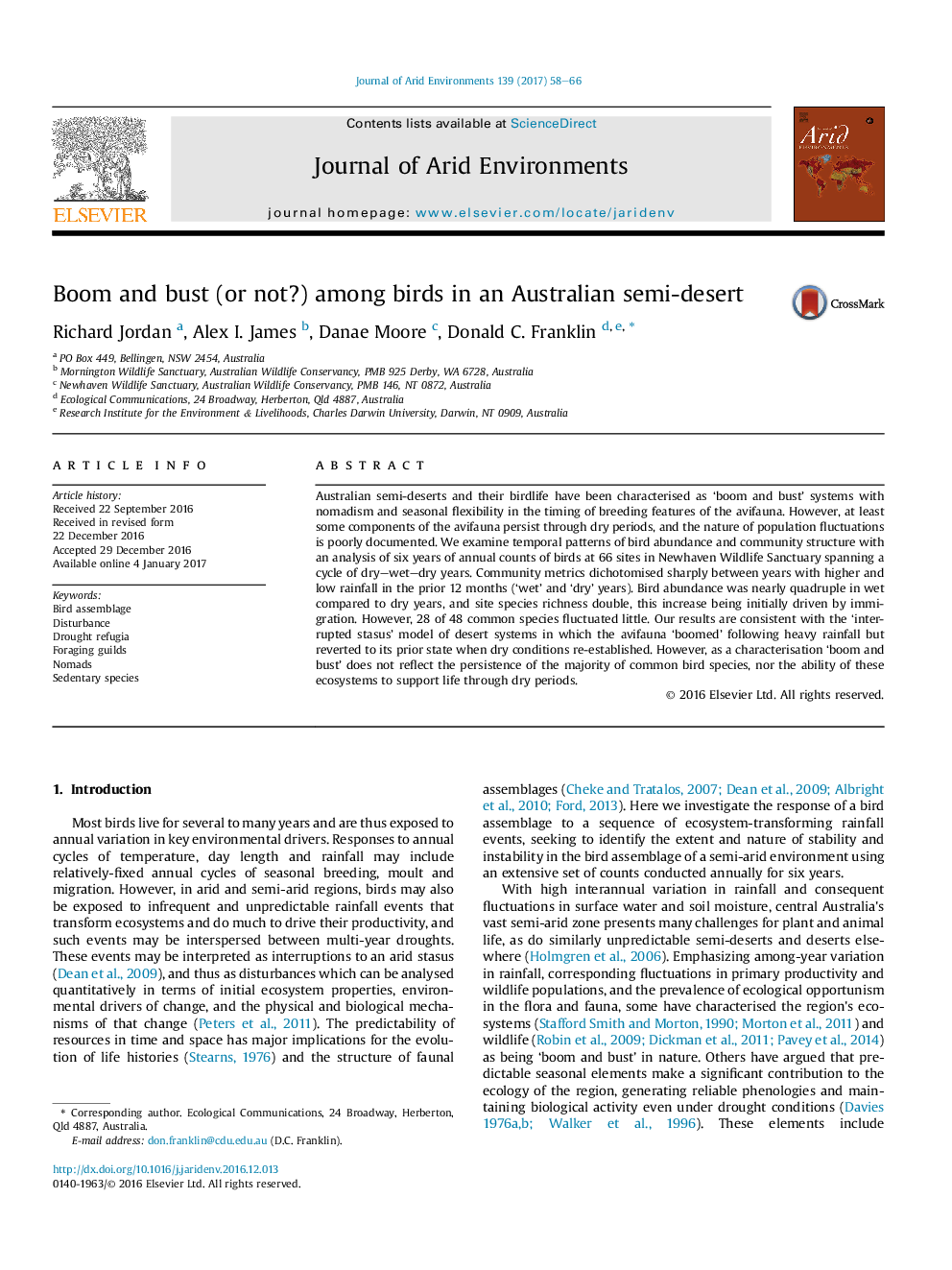| Article ID | Journal | Published Year | Pages | File Type |
|---|---|---|---|---|
| 5744347 | Journal of Arid Environments | 2017 | 9 Pages |
â¢Bird abundance in a semi-desert fluctuated four-fold between dry and wet years.â¢Following rain, birds abundance increased initially due to massive immigration.â¢However, populations of 28 of 48 common bird species fluctuated little over time.â¢'Boom and bust' is not a good descriptor because the assemblage was never 'bust'.
Australian semi-deserts and their birdlife have been characterised as 'boom and bust' systems with nomadism and seasonal flexibility in the timing of breeding features of the avifauna. However, at least some components of the avifauna persist through dry periods, and the nature of population fluctuations is poorly documented. We examine temporal patterns of bird abundance and community structure with an analysis of six years of annual counts of birds at 66 sites in Newhaven Wildlife Sanctuary spanning a cycle of dry-wet-dry years. Community metrics dichotomised sharply between years with higher and low rainfall in the prior 12 months ('wet' and 'dry' years). Bird abundance was nearly quadruple in wet compared to dry years, and site species richness double, this increase being initially driven by immigration. However, 28 of 48 common species fluctuated little. Our results are consistent with the 'interrupted stasus' model of desert systems in which the avifauna 'boomed' following heavy rainfall but reverted to its prior state when dry conditions re-established. However, as a characterisation 'boom and bust' does not reflect the persistence of the majority of common bird species, nor the ability of these ecosystems to support life through dry periods.
